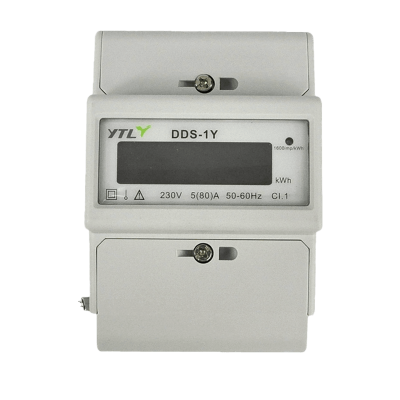 Proper use of IEC power meter is essential to ensure their long-term stable operation and accurate measurement of electrical energy, and it is necessary to understand and master their characteristics and usage methods. Here are some steps and recommendations on how to properly use IEC power meter:
Proper use of IEC power meter is essential to ensure their long-term stable operation and accurate measurement of electrical energy, and it is necessary to understand and master their characteristics and usage methods. Here are some steps and recommendations on how to properly use IEC power meter:
1. Understand the characteristics of IEC power meter
IEC power meter have a variety of characteristics and parameters, including voltage and current range, accuracy class, operating temperature range, function, installation method and size. These features play a key role in the selection of an power meter, and users need to carefully read the user manual and the technical information provided by the manufacturer to ensure that the meter can meet the needs of the specific application.
Choose the right IEC power meter
When selecting an power meter, factors such as measurement requirements, characteristics of the power network, and the installation environment need to be considered. For example, if you need to measure the highest voltage, you should choose an power meter that can handle high voltages. At the same time, if the measurement ambient temperature changes greatly, an power meter that can operate within a wide temperature range should be selected.
Properly install the IEC power meter
The installation method of IEC power meter has an important impact on their normal operation and service life. It is necessary to choose the appropriate installation method according to the size, weight and installation environment of the power meter. In general, power meters should be installed in places that are stable, easily accessible, and not subject to mechanical or chemical damage. Connect the power and signal lines according to specifications and requirements, taking care to follow safety specifications.
Reasonable configuration and use of IEC power meter additional functions
IEC power meter are usually equipped with a variety of additional functions, such as electricity demand/consumption indicators, rate and peak load indicators, event recorders, etc. These functions need to be understood and configured and used to improve measurement efficiency and accuracy.
Installation and debugging
IEC power meter needs to read the installation operation manual carefully before installation, strictly abide by the manufacturer's installation operation manual for operation, wrong operation may cause equipment damage or safety problems. After installation, check whether the wiring is correct, whether the power cord connection is firm enough, whether the IEC power meter is fixed firmly, and check whether it is normal according to the running indicator light when powered.
6. Compliance and certification
When using IEC power meter, local power measurement standards and regulations need to be considered. Relevant certifications or approvals may be required to use specific power meters. Therefore, when selecting and using IEC power meter, it should be ensured that they comply with local regulations and standards.
7. Regular audit and calibration
To ensure the accuracy and reliability of IEC power meter, regular audits and calibrations should be carried out. Depending on usage and regulatory requirements, there is the option to send to a specialist laboratory for full calibration or on-site calibration using a portable calibrator.
The correct and reasonable use of IEC power meter requires a full understanding of its characteristics and operation methods, and the selection of appropriate power meters according to specific applications, correct installation and commissioning, reasonable configuration and use of additional functions, compliance with operating procedures and regular audits and calibrations. By following these steps and application recommendations, IEC power meter can be better utilized to accurately measure and control energy in power networks, improve energy management efficiency and reduce energy waste.

 English
English 简体中文
简体中文


.png?imageView2/2/w/500/h/500/format/png/q/100)











